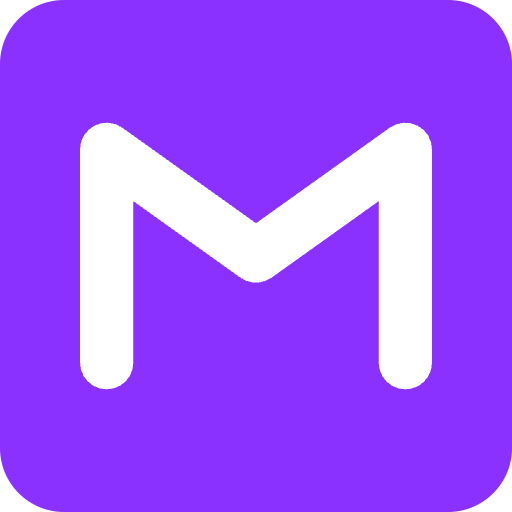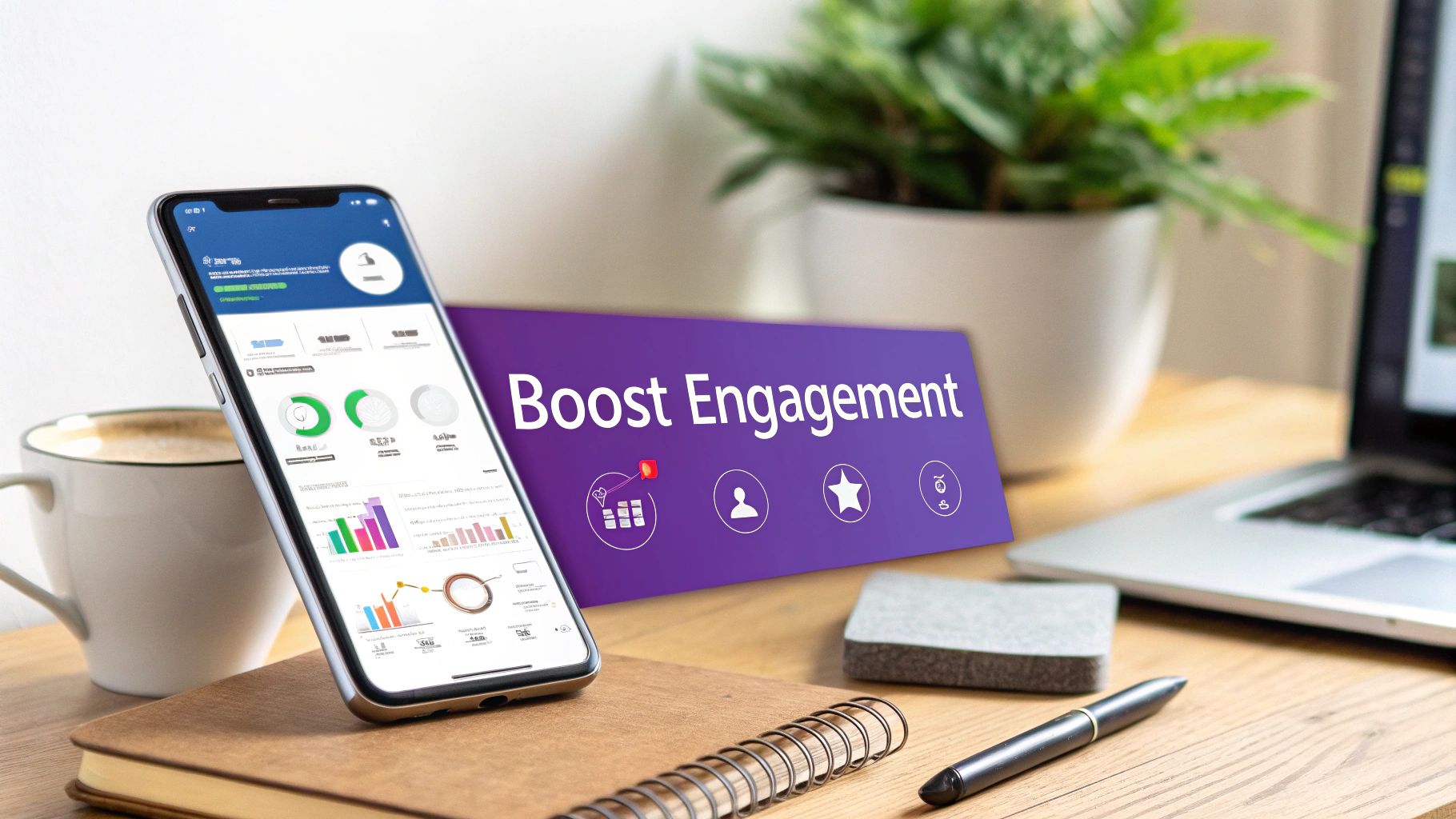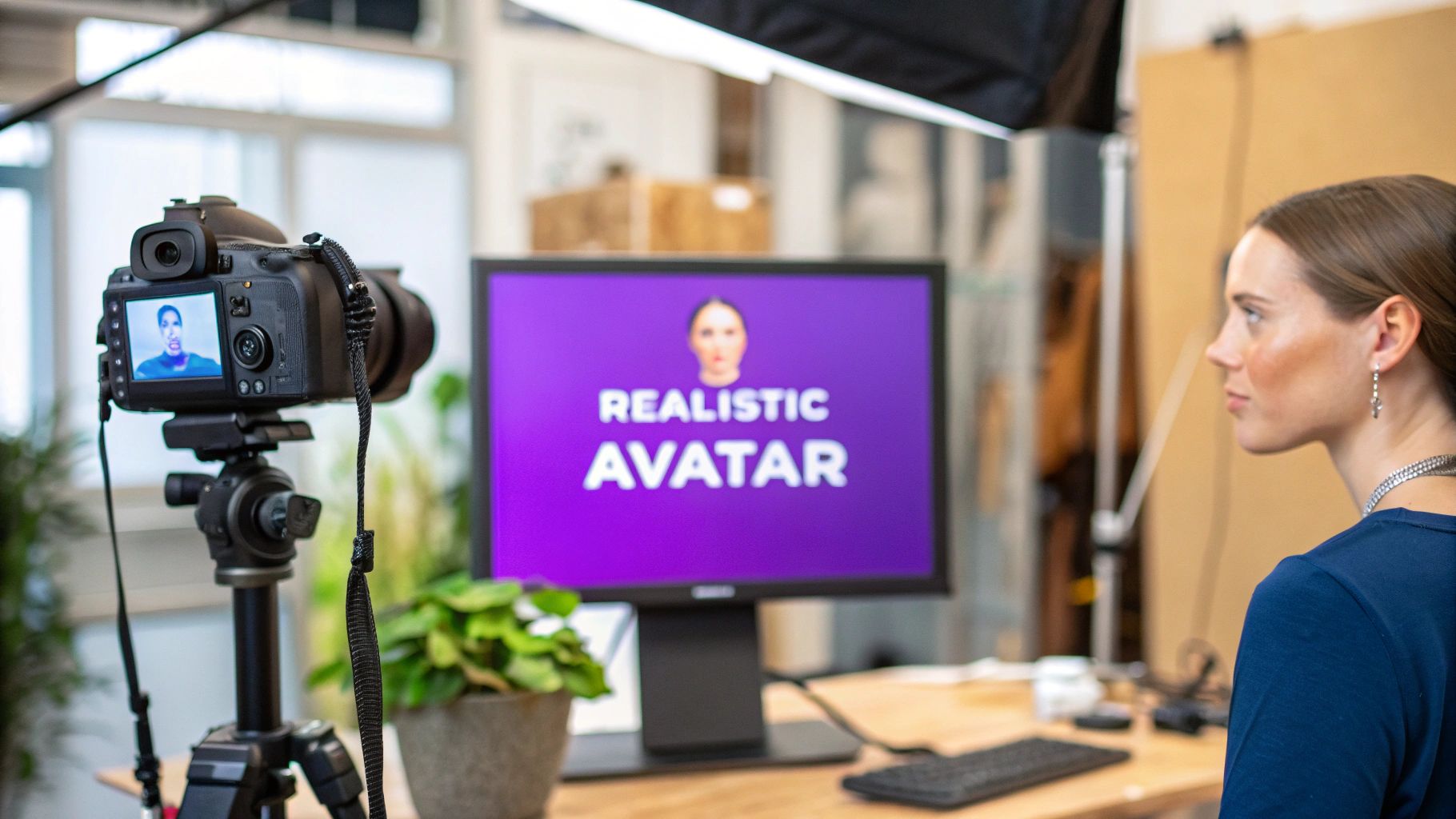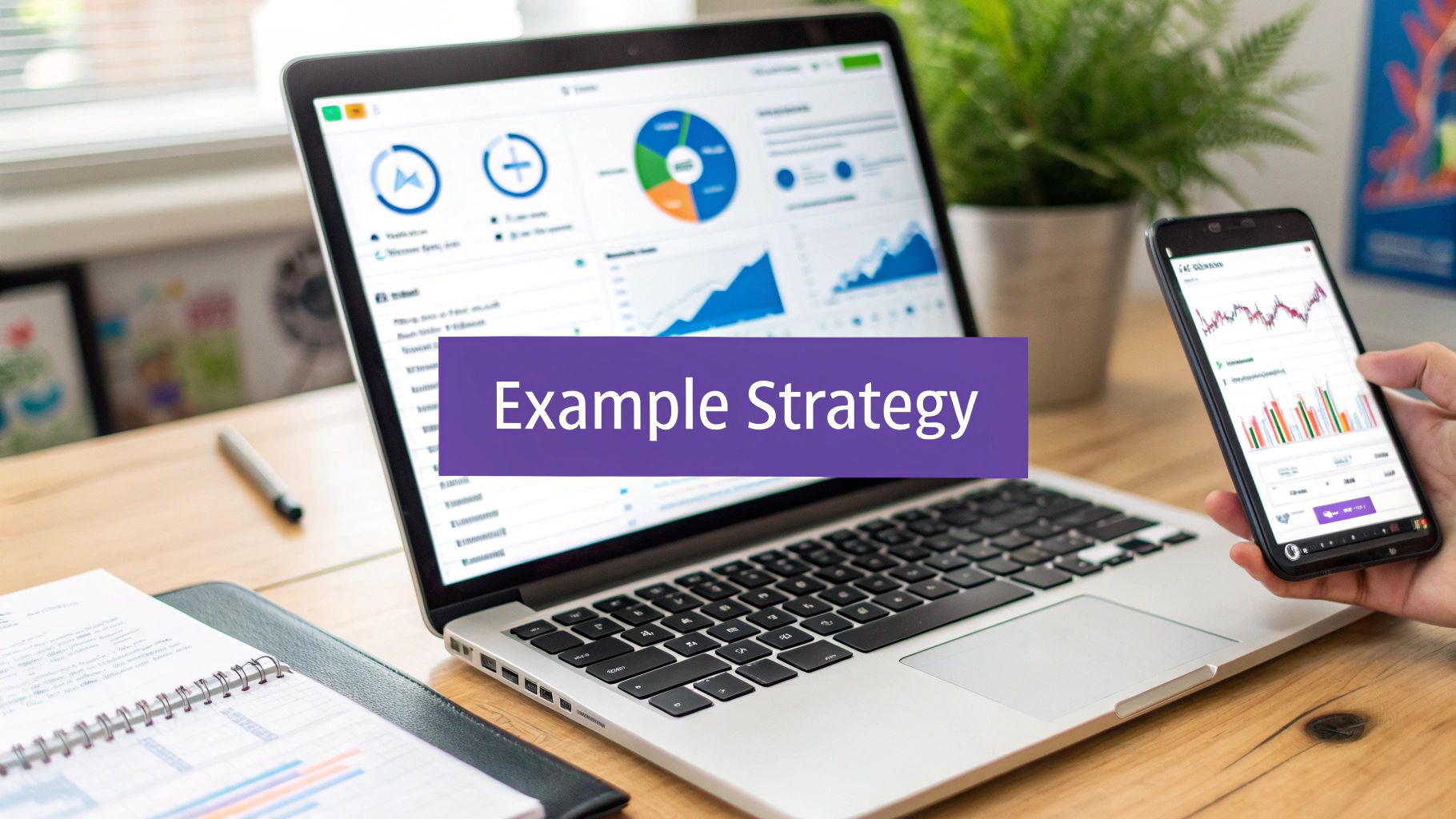Lead Generation for Small Businesses That Works
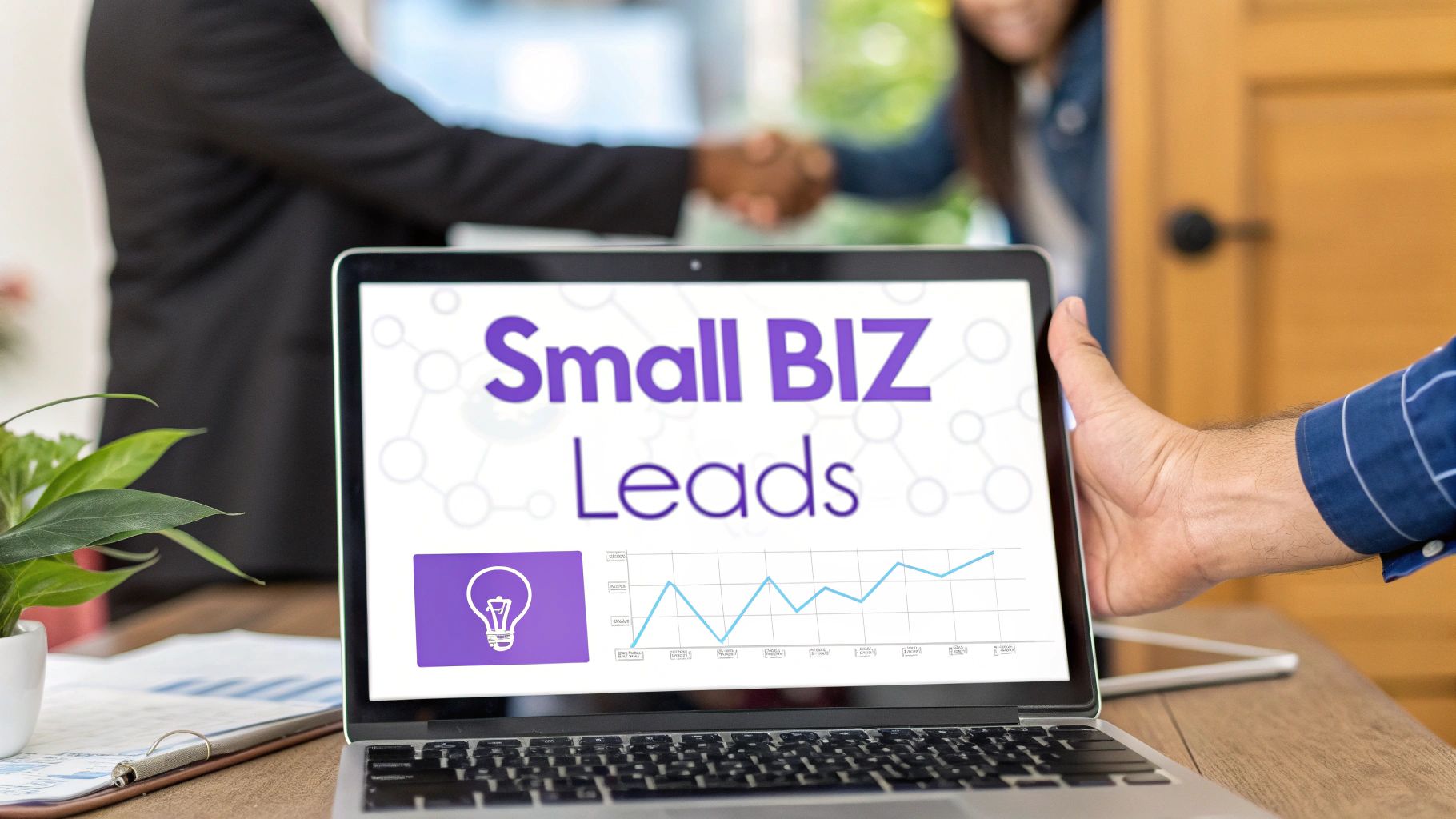
Effective lead generation for small businesses isn't just about getting more leads—it's about attracting the right ones. It's the engine that turns your marketing efforts into actual customers, making sure your hard work translates into real growth, not just wasted ad spend.
Building Your Lead Generation Foundation

Before you even think about launching a campaign, you need to lay the groundwork. Just like you wouldn't build a house without a blueprint, you can't chase leads without knowing who you're after and why they should care. This initial planning is what separates sustainable growth from expensive, frustrating guesswork.
It all starts with getting crystal clear on your Ideal Customer Profile (ICP). This goes way beyond surface-level demographics like age or location. A solid ICP digs into the psychographics—the real motivations, challenges, and goals that drive your absolute best customers.
Defining Your Ideal Customer Profile
Think about one of your favorite clients, someone who truly loves what you do. What specific problem did you solve for them? What was that "aha!" moment when they knew they needed you? Answering these questions is how you start building a profile that actually works.
To create a powerful ICP, get specific about these areas:
- Pain Points: What keeps them up at night? For a freelance graphic designer, it’s not just "needing more work." It’s the constant stress of "finding high-paying clients consistently."
- Buying Triggers: What event pushes them to look for a solution now? Maybe it was a terrible experience with a competitor, a new business goal, or a sudden shift in their industry.
- Goals and Aspirations: What does success look like in their world? Your service should be the bridge that gets them there.
- Watering Holes: Where do they spend their time online? Are they hanging out in specific LinkedIn groups, scrolling through certain Reddit communities, or participating in niche industry forums? You have to know where they are to reach them.
A well-defined ICP is your north star for everything. It shapes your messaging, guides your content creation, and tells you which channels to focus on. For a deeper dive, check out our guide on how to increase your online presence to attract the right people.
Focusing on your ICP moves you from a shotgun approach (blasting your message everywhere and hoping for the best) to a sniper approach (precisely targeting only the most qualified prospects). That precision is the secret to cost-effective lead generation.
Inbound vs. Outbound Strategies
Once you know who you're targeting, you need to figure out how to get their attention. Generally, lead generation tactics fall into two main camps: inbound and outbound.
- Inbound Marketing: This is all about attracting customers by creating valuable content and experiences they’re already looking for. Think of it as leaving a trail of breadcrumbs that leads prospects right to your digital doorstep. SEO, blogging, and creating helpful social media content are classic inbound moves.
- Outbound Marketing: This involves proactively reaching out to potential customers. It’s the more traditional method, including things like cold calling, direct email outreach, or connecting with people at trade shows.
Most small businesses I've seen find the sweet spot with a hybrid model. For example, you might use SEO and blogging (inbound) to build long-term authority and attract organic traffic, while simultaneously using targeted LinkedIn outreach (outbound) to connect with a few high-value dream clients. Mastering effective inbound marketing lead generation is a great place to start.
This foundational work isn't a one-and-done task; it's an ongoing process. Lead generation remains a top priority for about 50% of marketers, and for good reason. While organizations generate an average of 1,877 leads per month, the average cost per lead hovers around $200. These numbers show just how critical it is to get your strategy right from the start.
Choosing Your High-Impact Marketing Channels
Now that you have your Ideal Customer Profile locked in, it's time to decide where to put your precious time and money. For a small business, every marketing dollar has to pull its weight. The trick is to sidestep the temptation of chasing every shiny new platform and, instead, focus on a smart mix of channels that actually align with your audience and goals.
This isn't an "either/or" between organic and paid strategies—it's about finding the right blend. A B2B software company, for instance, might get incredible results from a sharp LinkedIn strategy and solid SEO. A local bakery, on the other hand, will probably score more wins with hyperlocal SEO and drool-worthy Instagram ads.
H3: Organic Channels: The Long-Term Play
Organic channels are the bedrock of sustainable lead generation. They demand more of your time and expertise than your wallet, but the payoff is a valuable asset that keeps giving back for years to come.
Two of the most powerful organic channels are:
- Search Engine Optimization (SEO): This is all about getting your website to show up high in search results when your ideal customers are looking. Imagine someone googling "best accountant for startups" and finding your firm on page one. That's not just a lead; it's a highly motivated lead.
- Content Marketing: This means creating and sharing genuinely useful content—think blog posts, how-to guides, or videos—that attracts and helps your target audience. It’s not a direct sales pitch. It’s about building trust by proving you know your stuff.
These two work best together. You create fantastic content that answers real questions, and you use SEO to make sure people can find it when they need it most.
H3: Paid Channels: For Immediate Impact
While organic efforts build momentum over time, paid channels can deliver a jolt of energy right away. They're perfect for testing out a new offer, driving a flood of traffic to a specific campaign, or just getting a quick blast of visibility when you need it.
A couple of the most common paid channels include:
- Pay-Per-Click (PPC) Advertising: This is where platforms like Google Ads come in. You bid on specific keywords to get your ad displayed at the top of the search results, and you only pay when someone actually clicks on it.
- Social Media Ads: Platforms like Facebook, Instagram, and LinkedIn offer incredibly detailed targeting. You can place your message right in front of people based on their demographics, interests, job titles, and even their online behavior.
The data below shows exactly how other marketers feel about the effectiveness of different channels when it comes to pulling in new leads.
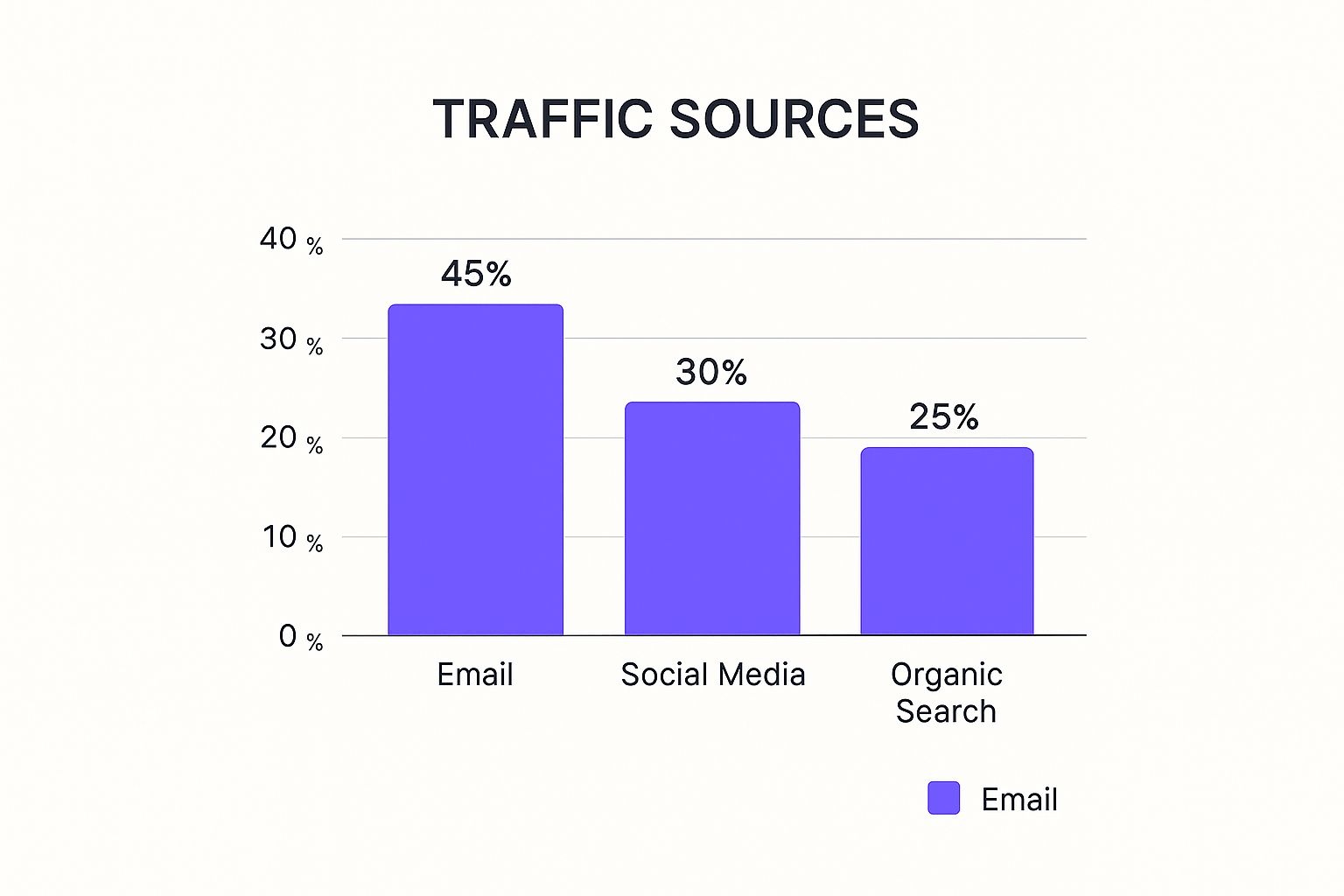
As you can see, email marketing is still a beast, but social media and organic search are right there with it—powerhouse channels that no small business can afford to ignore.
H3: Selecting the Right Channel Mix
So, how do you pick your battleground? Don't just follow the herd. You need to weigh each channel against your business goals, your budget, and most importantly, your Ideal Customer Profile. Where are your best customers actually hanging out online?
The most effective lead generation strategy isn't about being everywhere. It's about being in the right places, consistently. Choose one or two channels to master first before you try to conquer them all.
The numbers really back this up. For instance, leads that come from SEO have a jaw-dropping close rate of 14.6%, proving just how powerful it is to capture someone right when they're searching for a solution. And for B2B, social media is an absolute goldmine—a staggering 80% of B2B leads are generated on LinkedIn.
It's a testament to the fact that you don't need a massive team; just six hours per week on social media is enough for 66% of marketers to start seeing real, tangible leads. If you want to dive deeper, you can find more lead generation statistics and insights to help guide your choices.
Lead Generation Channel Effectiveness Comparison
To help you decide, here’s a quick comparison of some of the most popular lead generation channels. This table breaks down what you can realistically expect in terms of close rates, what each channel is best used for, and the kind of investment it typically requires from a small business.
| Channel | Typical Close Rate | Best For | Resource Investment |
|---|---|---|---|
| SEO | 14.6% | Capturing high-intent buyers, building long-term authority. | High time, moderate cost. |
| LinkedIn (B2B) | Varies (80% of leads) | B2B networking, high-value lead nurturing, thought leadership. | Moderate time & cost. |
| Social Media Ads | 1-5% | Hyper-targeted campaigns, brand awareness, retargeting. | High cost, moderate time. |
| Email Marketing | 2-5% | Nurturing existing leads, customer retention, direct offers. | Low cost, moderate time. |
| Content Marketing | Varies | Building trust, educating audience, supporting SEO efforts. | High time, low-moderate cost. |
This data just reinforces the need for a custom-fit strategy. If you're a B2B consultant, putting your energy into LinkedIn and SEO is a no-brainer. But if you're a direct-to-consumer eCommerce brand, a mix of SEO, Instagram Ads, and a killer email marketing funnel might be your winning ticket. The goal is to create a symbiotic relationship where each channel makes the others stronger.
Building a Lead Engine with Content and SEO
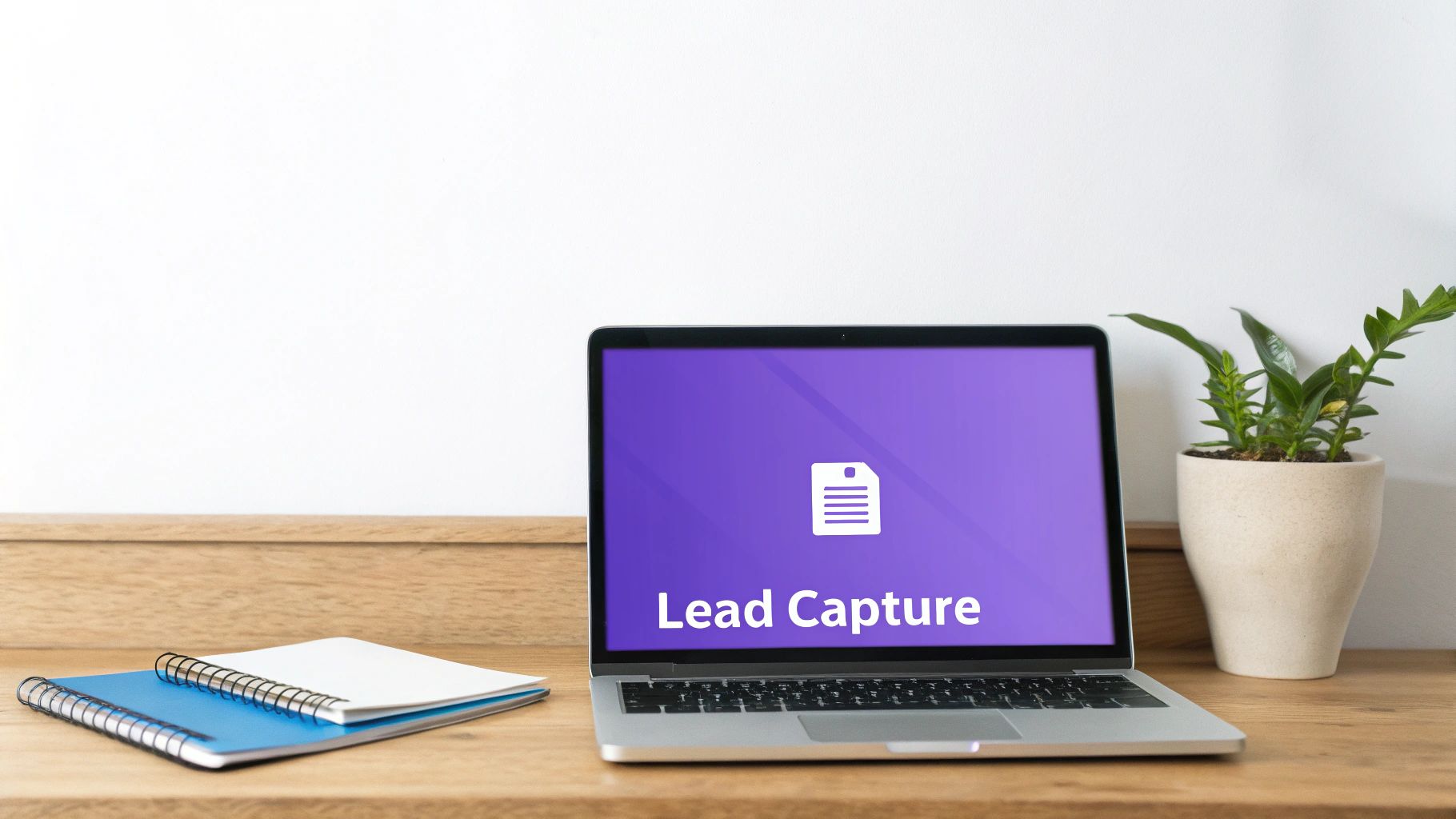
While paid ads can give you a quick boost, they're like renting an audience. For a sustainable, long-term lead generation for small businesses strategy, nothing beats the power couple of content marketing and SEO.
This is how you build a real asset—one that attracts your ideal customers 24/7, long after you’ve hit "publish." It’s not just about blogging; it's about creating a well-oiled content engine that consistently answers your audience's biggest questions, pulling them to your website through organic search. Think of it as leaving a trail of helpful, expert breadcrumbs that leads straight to your door.
Start with Strategic Keyword Research
First thing's first: you need to get inside your customers' heads. What are they actually typing into Google when they have a problem your business solves? That’s where keyword research comes in.
Don’t just guess. Use tools like Google Keyword Planner or other free alternatives to find the exact phrases your audience is using. The real gold is in long-tail keywords—those longer, more specific phrases that signal someone is much closer to making a decision.
For example, a boutique marketing agency trying to rank for "marketing agency" is fighting an uphill battle. But targeting a keyword like "content marketing services for SaaS startups" is a different story. It attracts a specific client with a clear need, meaning any lead from that search is already highly qualified.
Create Content That Genuinely Helps
Once you know what people are searching for, your mission is simple: create the best answer on the internet. Your content should be the resource you wish you had when you were in your customer's shoes.
A few content types are absolute workhorses for lead generation:
- In-Depth Blog Posts: Don't just skim the surface. Write comprehensive guides that walk readers through solving a real problem, step by step.
- How-To Guides: Practical, actionable content is a magnet for motivated prospects. Show your audience how to do something valuable, and you'll instantly establish your expertise.
- Case Studies: Nothing builds trust faster than proof. A detailed case study shows potential clients exactly how you've helped others like them get real results.
The key is to deliver value, first and foremost. If your content genuinely helps someone, they'll remember you. This is how you start building the trust needed to turn a visitor into a customer. For a deeper dive, our guide on how to create engaging content can help you craft pieces that truly connect.
Your content's primary job isn't to sell; it's to serve. When you focus on serving your audience with incredible value, the selling becomes a natural and much easier next step.
Design Irresistible Lead Magnets
Getting traffic to your site is only half the battle. The next step is converting those visitors into actual leads by capturing their contact info. That's where a lead magnet comes in.
A lead magnet is a free, valuable resource you offer in exchange for an email address. The trick is to make it so compelling that visitors are happy to make the trade.
The best lead magnets are:
- Ultra-Specific: They solve one specific problem for your ideal customer.
- Instantly Accessible: People love instant gratification. Offer it as a digital download (PDF, checklist, template) they can get right away.
- High-Value: It should feel like something they might have paid for.
Here’s a real-world scenario:
Imagine a financial advisor who specializes in helping freelancers. They write a killer blog post, "The Ultimate Guide to Freelancer Taxes," which draws in tons of traffic. Embedded in that post is a lead magnet: a "Quarterly Tax Calculation Checklist for Freelancers." It’s the perfect, practical tool for their audience, making the download a no-brainer.
Writing for Conversion
Your content needs to do more than just inform; it needs to gently persuade. To create content that not only attracts but also converts, it’s worth mastering some actionable copywriting tips. This means using clear calls-to-action (CTAs), structuring your content for easy scanning, and writing in a voice that connects with your readers.
The content you create isn’t a one-off campaign. It’s a permanent asset that can generate leads for months, or even years, to come. By combining smart keyword research, high-value content, and strategic lead magnets, you’re building an automated engine that consistently brings qualified prospects into your world—the true foundation for scalable growth.
Tapping into Social Media for B2B Leads
For a lot of small businesses, especially in the B2B world, social media feels like shouting into a void. You put in the effort, but the return just isn't there. But platforms like LinkedIn are more than just a digital rolodex—they're bustling marketplaces where clients are actively looking for solutions.
The secret is to stop broadcasting and start connecting. When you get it right, your social strategy can become a seriously powerful engine for generating high-quality leads. This isn’t about posting random company updates. It's about strategically positioning yourself as the go-to expert in your field. Your personal and company profiles stop being static pages and become dynamic, lead-attracting assets.
Optimize Your Profile for Attraction
Think of your LinkedIn profile as your most valuable piece of digital real estate. It should be working for you 24/7, even when you’re offline. The very first step is to tune it up, not for recruiters, but for potential clients.
Your headline is everything. It's prime real estate. Instead of a bland job title like "Founder at ABC Consulting," turn it into a powerful value proposition. Try something like: "Helping SaaS Startups Reduce Churn with Data-Driven Onboarding Strategies | ABC Consulting." Right away, prospects know exactly what you do and who you help.
Next up is your "About" section. This shouldn't be a dry list of your accomplishments. It needs to be a client-focused story. Use this space to speak directly to your ideal client's pain points and explain how you are the one to solve them. This simple shift from "me" to "them" is far more compelling for someone who needs help.
Engage with Purpose, Not Pitches
Once your profile is dialed in, it’s time to engage. The single biggest mistake small businesses make on social media is treating it like a one-way billboard. Your goal is to join conversations, not just start them.
Find industry-specific groups where your ideal customers hang out and start participating. The key here is to provide value, not to pitch. Answer questions, offer genuine insights, and share resources that are actually helpful.
Here’s what that looks like in the real world:
- Imagine a web developer spots a post in a small business group. A founder is frustrated with their website's slow loading times.
- Bad Engagement: "Hey, I build fast websites. DM me for a quote." This is a cold pitch, and it almost never works.
- Good Engagement: "That's a super common issue. Have you tried compressing your images? A tool like TinyPNG can make a huge difference. Also worth checking your hosting plan—sometimes a slow shared server is the real culprit." This is genuinely helpful and instantly positions the developer as an expert.
This value-first approach builds trust and makes people curious about who you are. When they inevitably click on your profile, your optimized headline and "About" section do the heavy lifting, qualifying them as a potential lead. Our complete guide on building a cohesive small business social media strategy can help you pull all these moving parts together.
Master the Art of Direct Outreach
Done right, direct outreach on LinkedIn can be incredibly effective. But it has to be handled with care. Those generic, copy-and-pasted connection requests? They’re the digital equivalent of junk mail and get ignored.
Before you even think about hitting "connect," spend two minutes on their profile. Look for something—anything—you can use to make it personal. A common connection, a recent post they shared, an article they wrote. This is your way in.
Here’s a simple, non-spammy script that works:
"Hi [Name], I saw your recent post on the challenges of remote team management and completely agree with your point about asynchronous communication. I've been exploring that topic a lot myself. Would be great to connect and follow your insights."
This message is specific, genuine, and gives a real reason for connecting. After they accept, you can nurture that connection over time and, if it feels right, eventually steer the conversation toward business.
There's no denying it: LinkedIn is a heavyweight in the B2B world. In 2024, the platform pulled in over 587 million visits from organic traffic alone. And a solid 40% of B2B marketers point to it as their top channel for high-quality leads. LinkedIn Lead Gen Forms are especially potent, with an average conversion rate of 13%—that's more than five times what you'd see on a typical landing page. You can dig into more impressive data on LinkedIn lead generation here.
This chart from Sopro.io breaks down just how effective different lead gen activities are on the platform.
The data speaks for itself. Direct messaging and connecting with relevant professionals are clear winners, hammering home the importance of personalized, thoughtful outreach.
Turning Leads into Customers with Nurturing
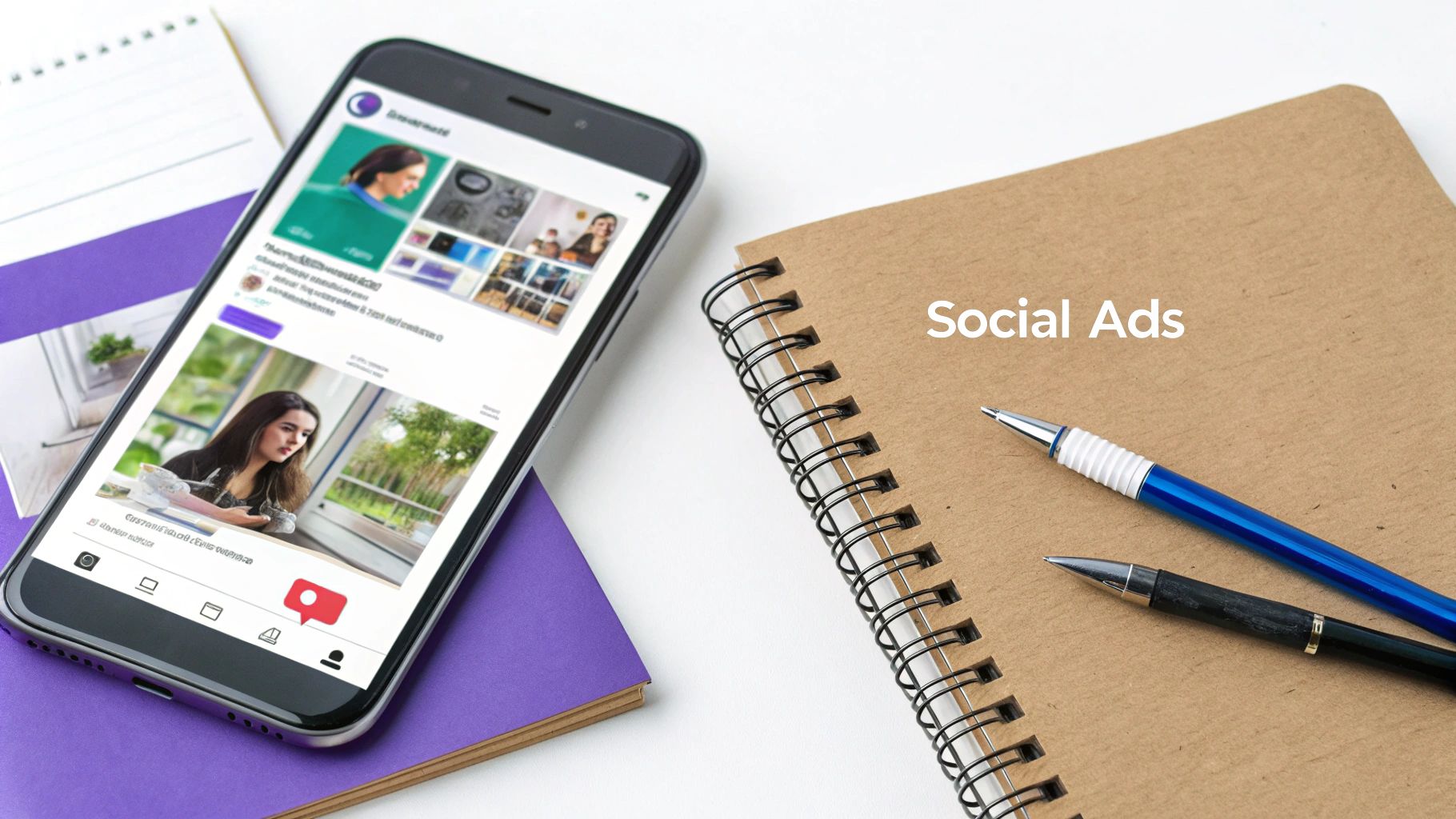
Getting a new lead feels great, doesn't it? But here’s the thing I’ve learned over the years: that’s just the starting whistle, not the finish line. The real magic in lead generation for small businesses happens after you get that email address. It’s all about turning that initial flicker of interest into a real customer relationship. This is where the work of nurturing really begins.
That journey kicks off the second a prospect decides to connect. Think of your landing page and lead capture form as the digital handshake that welcomes them in. Simplicity is your absolute best friend here. A cluttered page or a form that feels like an interrogation will make potential leads bounce faster than you can say "conversion."
Keep your eye on a single, clear call-to-action (CTA). If you’re giving away a free guide, the entire page should scream about that guide. Ditch the distracting navigation menus and trim your form fields down to the bare essentials. Often, just a name and email is all you need to get the conversation started.
Crafting High-Converting Landing Pages
I can't stress this enough: a high-converting landing page has one job and one job only—to get the visitor to take a specific action. It needs to feel like a seamless continuation of the ad or social media post that brought them there, with perfectly matched messaging and visuals.
For example, if you’re running a Facebook ad for a "Beginner's Guide to Container Gardening," your landing page better have that exact title and similar imagery front and center. It’s a small detail, but it instantly tells the visitor, "Yes, you're in the right place," and builds a quick dose of trust.
Your landing page is not your website's homepage. It's a focused, distraction-free environment built for one purpose—conversion. Every element, from the headline to the button color, should work toward that single goal.
The Power of Automated Email Nurturing
Okay, you have their email. Now the real nurturing can kick into high gear. This is your chance to build trust and stay top-of-mind without coming across as pushy. An automated email sequence, what we often call a "drip campaign," is your most powerful tool for this.
Instead of just one "thank you" email, imagine setting up a series of 3-5 emails that go out over a week or two. Each one should offer more value related to the resource they just downloaded. This strategy positions you as a helpful expert, not just another person trying to sell something.
A simple, effective sequence might look like this:
- Email 1 (Immediate): Deliver the goods! Send the promised lead magnet and offer a warm welcome.
- Email 2 (2 Days Later): Share a related tip or a quick win they can achieve using your resource.
- Email 3 (4 Days Later): Tell a story. Share a case study or a quick success story showing how others have benefited from your expertise.
- Email 4 (7 Days Later): Gently introduce your core service or product as the next logical step in their journey.
This staggered, value-first approach is incredibly effective because it builds a relationship before you ask for the sale. When the pitch finally comes, it feels natural and genuinely helpful.
Boost Conversions with Smart Segmentation
Let's be real: not all leads are the same. Someone who downloaded a beginner's guide has very different needs from someone who requested a pricing sheet. Blasting them with the same generic emails is a huge missed opportunity. This is where segmentation makes all the difference.
Segmentation simply means dividing your email list into smaller, more specific groups based on their interests, behavior, or where they are in their buying journey. For instance, you could tag leads based on the specific lead magnet they downloaded.
This allows you to send highly relevant, targeted content that speaks directly to their problems and goals. The result? Dramatically higher engagement and, you guessed it, more conversions.
By thoughtfully capturing, nurturing, and segmenting your leads, you're not just collecting contacts—you're building a reliable system that turns curious prospects into loyal customers. For more strategies on this front, you can explore our detailed guide on how to attract clients for your small business.
Answering Your Top Lead Generation Questions
As you start putting these lead generation ideas into practice, you’re bound to have questions. It’s completely normal. Getting clear answers is what separates a stalled effort from a successful one, so let's tackle some of the most common questions we hear from small business owners.
Think of this as your go-to cheat sheet. We'll give you straight, experience-based answers to help you sidestep common roadblocks and make sure your work translates into real, measurable growth.
What Is the Most Effective Lead Generation Strategy?
There’s no single magic bullet here. The truth is, the most effective approach is almost always a blend—a hybrid strategy that combines the slow-burn, long-term power of inbound marketing with the quick wins of outbound tactics. The key is tailoring it all to your specific audience.
For most small businesses, a great starting point looks something like this:
- Content & SEO: Start building a library of genuinely helpful blog posts, guides, and articles. Think of this as a long-term asset that will keep attracting organic traffic and building trust for years to come.
- Targeted Paid Ads: Don't just wait for people to find you. Supplement your content with focused Google Ads or social media advertising. This lets you drive traffic immediately, test different offers, and get in front of a highly specific audience right away.
The goal isn't to choose one or the other but to create a system. Your inbound efforts will generate a steady, low-cost stream of leads, while your paid campaigns provide predictable boosts exactly when you need them.
How Much Should a Small Business Spend on Lead Generation?
This is the million-dollar question, isn't it? While "it depends" is the honest answer, a solid benchmark to start with is allocating 5-10% of your total revenue to marketing and lead generation.
A brand-new business might need to be more aggressive out of the gate, maybe pushing that number closer to 12-15% just to get on the map and build some initial brand awareness. On the flip side, an established business with a steady flow of customers might focus more on optimizing its cost per lead (CPL) and getting more efficient within that 5-10% range.
Here's the most important takeaway: Don't get hung up on the exact percentage. Start with a modest, measurable budget, track every single dollar, and then confidently scale up what’s proven to work. Don't spend big until you know what's actually delivering a positive return.
What Are the Easiest Leads to Get?
Hands down, the easiest and often highest-quality leads you'll ever get come from referrals.
These leads show up with a powerful layer of built-in trust because they were sent your way by someone they already know and respect. They're essentially "pre-sold" on your value, which can dramatically shorten the sales cycle.
Setting up a simple referral program can be one of the most low-cost, high-return things you do. It doesn’t need to be complex; a simple discount for both the person referring and the new customer can work wonders.
Beyond referrals, the "easiest" leads often depend on your business type:
- For local service businesses (like plumbers, dentists, or landscapers): Leads from local SEO are pure gold. When someone searches "emergency plumber near me," their intent is immediate and location-specific. These are hot leads that are much easier to convert.
- For B2B businesses: Leads generated through smart, targeted engagement on a platform like LinkedIn can be incredibly effective. By providing real value in relevant groups and conversations, you can attract warm leads who are already interested in your expertise.
Of course, tracking all these efforts is crucial. To make sure your social channels are primed to capture these opportunities, it's a good idea to perform regular check-ups. Our social media audit checklist can walk you through a detailed review of your profiles and performance, ensuring you aren't missing out on these valuable, easy-to-get leads.
Ready to transform your online presence and turn your profiles into powerful lead-generating assets? MakerBox uses AI to create optimized bios, striking profile photos, and engaging social media content in just 30 seconds. Elevate your credibility and attract more clients effortlessly. Start your 14-day trial today.
